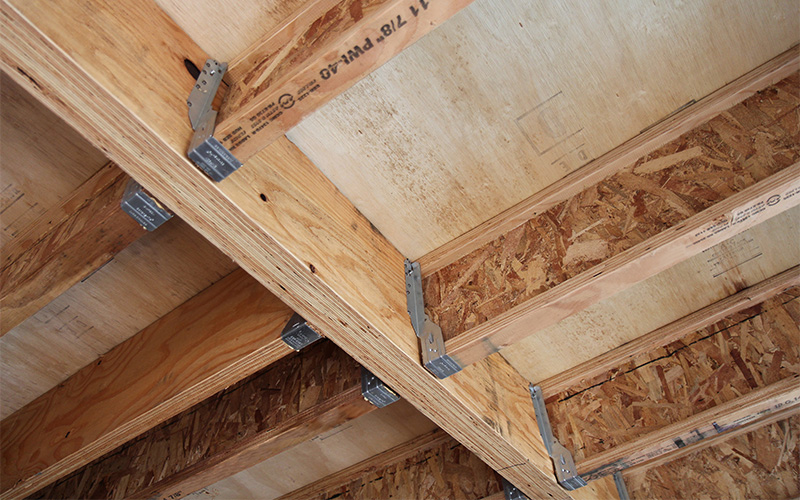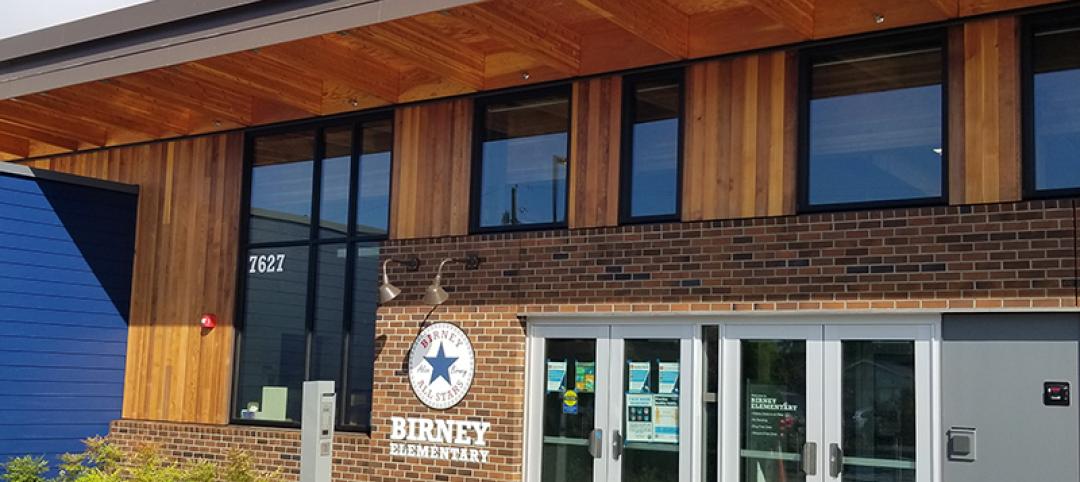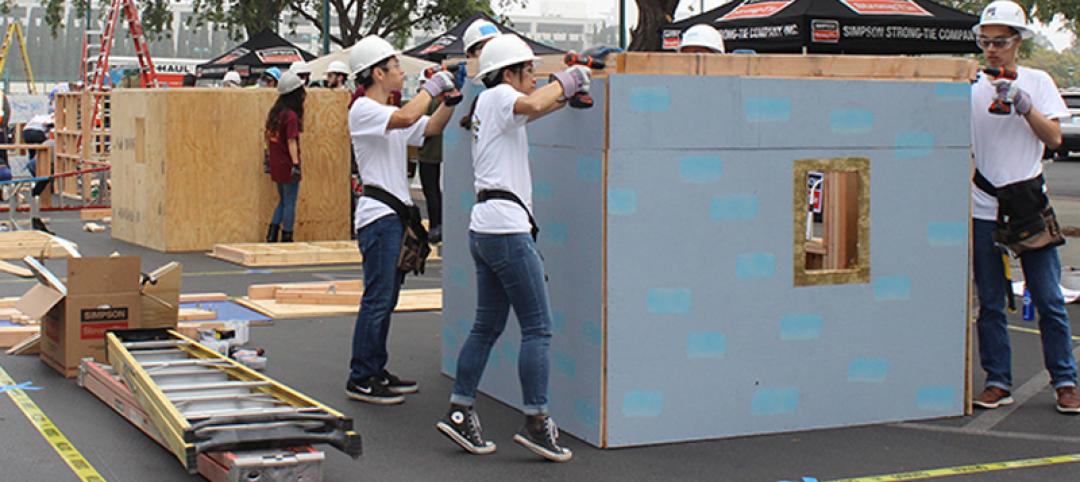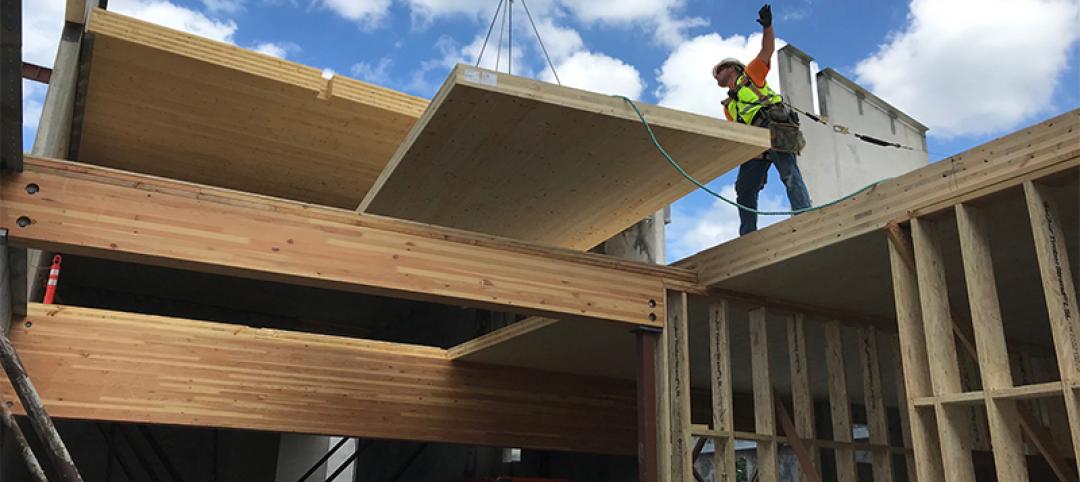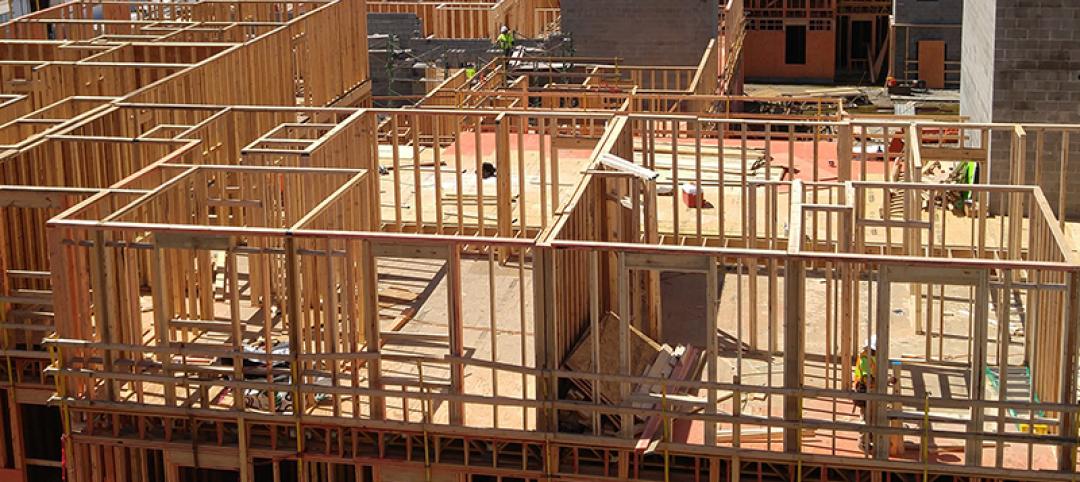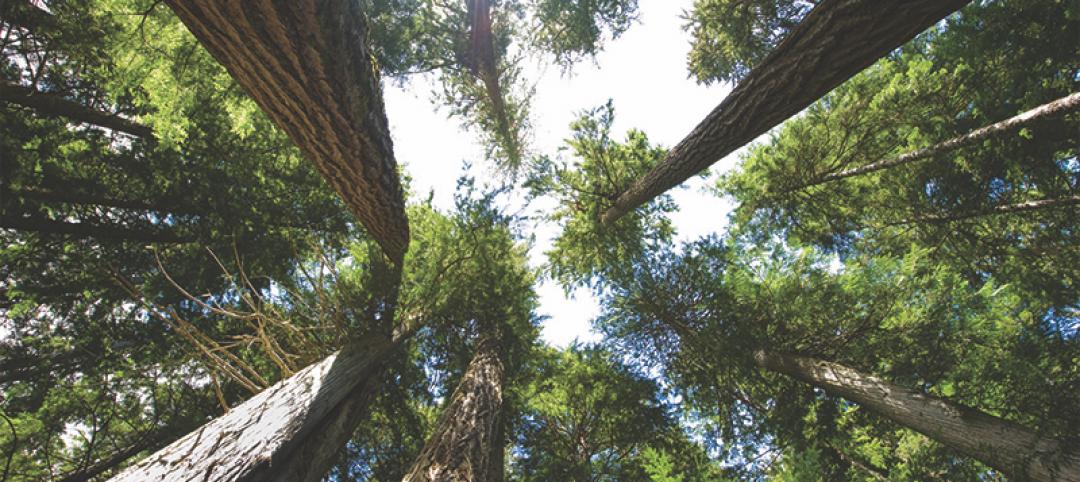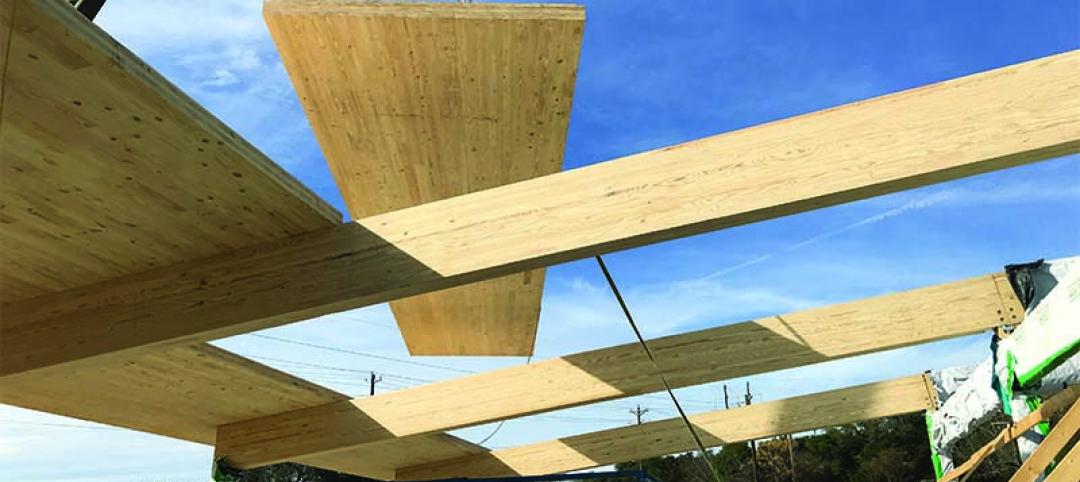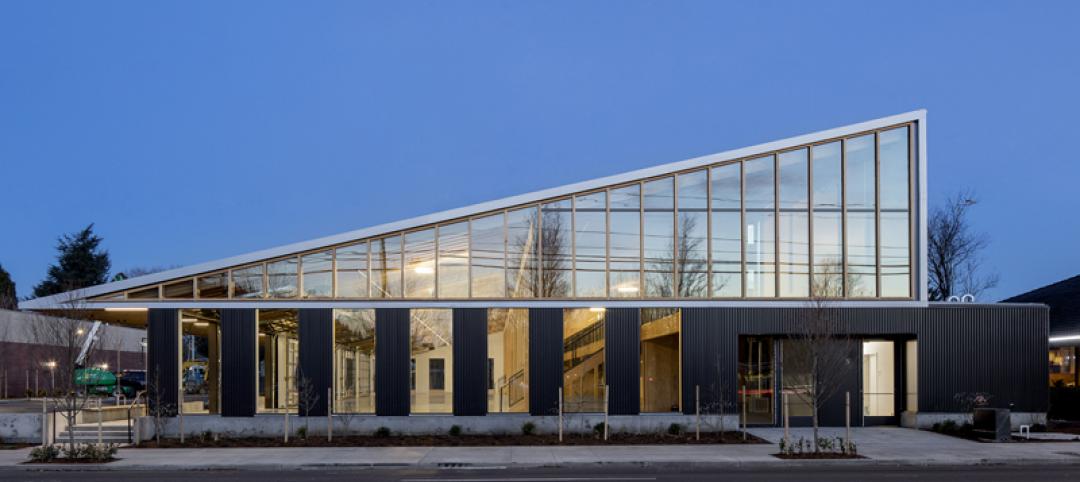Wood’s strength depends on the direction of the grain. The technical term for this variance is “orthotropic,” which means having different strengths in three planes perpendicular to each other. An easy way to understand the orthotropic strength properties of wood: Visualize a tree trunk as structurally similar to a bundle of drinking straws. Push on the long ends of a bundle of straws, and the straws can take a good amount of pressure and still stay in shape. But fold the straws in half, and they deform easily.
Like a bundle of straws, wood grain is strong in the longitudinal direction. Think of columns of peeled tree trunks holding up roof trusses as a classic example of this longitudinal strength. However, wood is not as strong when loaded perpendicular to the grain. Like the straw example, the direction opposite to a tree trunk’s vertical growth is wood’s weakest. Too much tension perpendicular to the grain pulls wood fibers apart and can lead to catastrophic failure. Notching, large diameter fasteners and hanging loads can all contribute to this kind of failure. On the other hand, structural designs that take advantage of wood’s longitudinal strength are economical, attractive and easier to design and detail.
Moisture and Environment
Wood is sensitive to moisture changes. It expands in moist or humid environments and shrinks in dry environments, so it is important to design connections that allow for movement. Connections that are not detailed correctly for wood shrinkage can cause splitting. Detailing connections with slotted holes allow wood movement without causing stresses perpendicular to the grain. Shrinkage of the wood can also result in loose connections, while swelling can deform connection hardware. Good wood connection design accounts for these natural tendencies. For illustrated guidance on detailing connections and avoiding common connection errors, download Glulam Connection Details, Form T300.
Exterior connections must drain moisture, as trapped moisture provides ideal conditions for fungal growth and decay. To last, exterior connections must be properly vented or drained. Avoid leaving wood in direct contact with concrete, masonry or grout, which are porous and wick moisture. One solution is to leave a 1/2-inch air gap between wood and these materials.
Harsh environments require corrosion-resistant connections. Wood treated with preservatives or fire retardants and wood in wet environments, especially salty ocean air, all require corrosion-resistant connections.

Spread Out the Load
It is better to use multiple small fasteners rather than one large fastener. Concentrated loads can overstress wood’s capacity. Rather than creating a concentrated load by using one large-diameter bolt, spread out the load and provide redundancy by using many small fasteners instead.
The Nitty-Gritty on Nails
Nails come in a wide variety of types and names, and to complicate matters, there is no standard for nail nomenclature. For example, pennyweight does not translate to interchangeability: a 10d common nail has a diameter of 0.148 inch, a 10d box nail has a diameter of 0.128 inch and a 10d sinker nail has a diameter of 0.120 inch. Avoid confusion and ensure correct nail size by specifying diameter and length, with an optional description of nail by pennyweight and type (e.g., 0.148” x 3” [10d common]).
For further details on best practices in wood connection design, watch “Connection Design Solutions for Wood.” AIA and ICC continuing education credits available.
More from Author
APA – The Engineered Wood Association | Nov 12, 2020
Engineered Wood Gets an Easy A
A Washington school district creatively leveraged the aesthetic and acoustic benefits of engineered wood products in their newly constructed school.
APA – The Engineered Wood Association | Oct 26, 2020
2019 Timber-Strong Design Build Competition
Six student teams competed at the National Council of Structural Engineers Association (NCSEA) Summit to design and build the most efficient and creative wood structure.
APA – The Engineered Wood Association | Oct 1, 2020
Exposing the beauty of engineered wood
A glimpse into the creative application of engineered wood products on one of the largest mass timber projects in the Pacific Northwest.
APA – The Engineered Wood Association | Aug 20, 2020
Back to basics: Framing big buildings right
A look into the most common wood construction framing errors, and how to avoid them, in today’s nonresidential construction industry.
APA – The Engineered Wood Association | Jul 14, 2020
Measuring the environmental performance of engineered wood products
“Green” is just a buzzword unless environmental impacts can be demonstrated scientifically.
APA – The Engineered Wood Association | Jun 12, 2020
Fire Phraseology FAQs: FRT versus Fire Rating
Fire resistant, fire retardant, fire rating: what’s the difference?
APA – The Engineered Wood Association | Apr 15, 2020
Engineered wood in retrofits and remodels
A cost-effective replacement for hard-to-source timbers in historical projects.
APA – The Engineered Wood Association | Mar 3, 2020
Mass timber has banks seeing green
First United Bank Invests in First Mass Timber Buildings in Texas, Oklahoma
APA – The Engineered Wood Association | Feb 14, 2020
Beauty and the Budget
Engineered Wood’s Appeal is More Than Skin Deep

